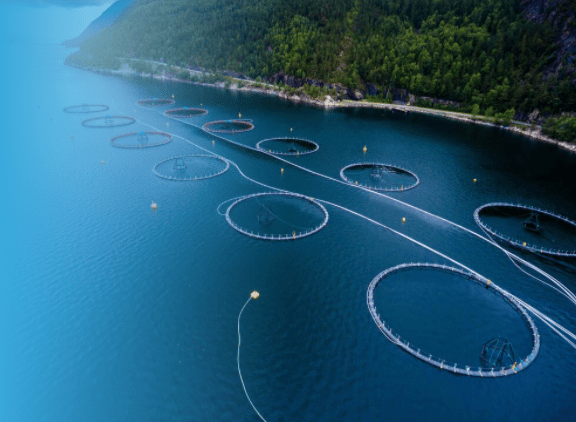Nanobubbles are well placed for salmon farms, says technology company Moleaer.
Moleaer’s biggest market is irrigation, where the tech to create nanobubble-enriched water to improve water quality and promote root development.
Broad spectrum
But nanobubbles can also be used to improve the efficiency of a broad spectrum of chemical, biological, and physical processes.
CEO Nick Dyner explained to SalmonBusiness that tech is well placed for its customers who are farming salmon because of its ability to reduce oxygen costs and to help overcome environmental challenges.
Dyner has worked as an expert on water solutions for over a decade at large corporations such General Electric and LG Chem.
Oxygenated nanobubbles technology is a research area in which Japan which was at the forefront of development. Moleaer’s patented technology injects trillions of these into liquid to deliver gas-to-liquid transfer.
Last month, the American company closed a USD 9 million Series B fundraise led by S2G Ventures’ Oceans and Seafood Fund and joined by existing investors, ADM Capital’s Cibus Enterprise Fund and Energy Innovation Capital.

Pop
“We transfer oxygen into the water more efficacy than any other tech on the market. And that’s a function of nanobubble technology, so in the pursuit of these bubbles that are about 100 nanometres in size, 2500 times smaller than a grain of salt, you are forming bubbles that don’t rise to the surface and pop,” explained Dyner.
“And so you are going to dissolve gas, regardless of the gas, far more efficiently. All other tech is forming larger bubbles when you are transferring gas into water. The size of the bubble dictates how fast it rises. The depth that you inject it to dictates how much distance it has to travel before it comes to the surface and pop,” he added.
“In addition to transferring gas more efficiently, the nanobubbles we form through this gas transfer process persist in water (since they don’t rise like other bubbles) which not only help maintain elevated levels of dissolved oxygen, but also participate in various physical (which can aid in separation processes or scour biofilm from surfaces or reduce surface tension) and chemical reactions (which can help oxidize unwanted metals, contaminants and pathogens). I know this gets “deep tech” fast, but it is unique to the nanobubble”, he said.

For salmon, he said to think of a soda can. When when you open it, bubbles start to rise, and in that case, it’s co2 that comes out of the water. But for salmon farming, it’s oxygen.
“The bubbles don’t lie,” he said. “As now you have these bubbles that don’t rise to the surface, as they are too small, and they are continuously providing more oxygen into the water whether in the hatchery, net pen or sea cage”.
Dyner explained that he has seen customers in the salmon industry replace their oxygenating system with retrofitted nanobubble technology. “We reduce the energy cost as we don’t pressurize and we reduce the amount of oxygen they need by 50 to 90 per-cent”.
Distinct
The CEO could not say which companies are using the technology. But he said that in Chile, salmon farmers are using it to oxygenate below sea cages for sea bed remediation. In Canada, the tech has, at one site, been attributed a 22 per-cent increase in biomass. For sea lice removal in sites in Norway, it is helping by “extending amount of oxygen you put in the water, so reducing stress on the fish, so treatment can be run longer”.
“You see all opportunities where nanobubbles create added value beyond just oxygen savings. With salmon farming, it’s distinct as they are already using it,” he concluded.

